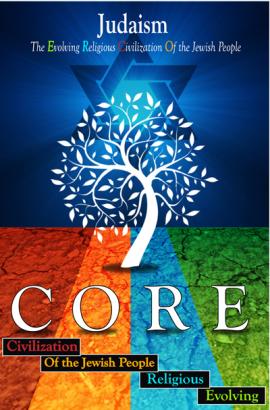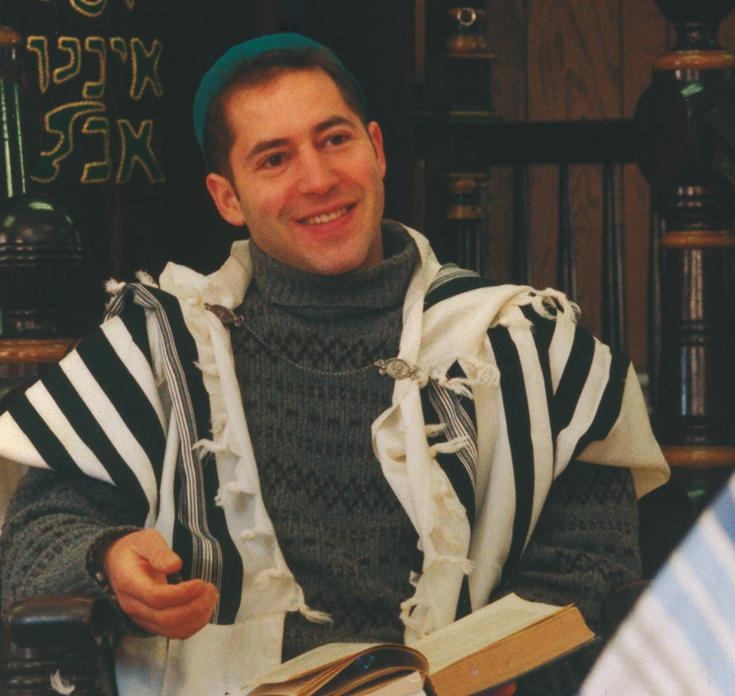Reconstructionism understands Judaism to be the evolving religious civilization of the Jewish people. Rearranged slightly, the key words above form the memorable acronym CORE:
- Civilization
- Of the Jewish People
- Religious
- Evolving
What do the terms of CORE tell us about the Reconstructionist approach to Jewish life?

Civilization: Jewish life can and should be rich and multidimensional, like a full-fledged civilization. Social action, art, literature, food, music, philosophy, architecture, etc, have all comprised key elements. While prayer and classical ritual–the often assumed religious modes–provide wonderful components, there are many other important ways individuals can participate in Jewish civilization and contribute.
Of the Jewish People: Judaism must serve today’s generation and the generations of the future. We need not dedicate our Jewish lives to preserving a fixed tradition from the past. Rather, we must explore the traditions we’ve received and bring them to life in ways that best invigorate us. Reconstructionists make key decisions about Jewish life not only as individuals, but as part of a community. Communal decisions help everyone connect to a greater whole and to an enduring community of Jews everywhere.
Religious: Judaism isn’t just a civilization, it’s a ‘religious civilization’. Judaism draws from a collection of central concepts and symbols. These include Torah, Shabbat and Tzedakah, to name a few. Their many layers of significance enrich our lives. They guide us and help us to share our search for meaning with one another. While we may utilize these ‘sancta’ in new and changing ways, their continued centrality helps us to maintain our powerful connection to the many generations of Jews at all other times and in all places.
Evolving: Judaism has always developed over time–and must continue to do so to meet the needs of a changing world. For example, in biblical times, our Israelite ancestors celebrated their connection with the Land and with God especially through agricultural offerings. After the destruction of the Temple nearly 2000 years ago, we ‘reconstructed’ our tradition to focus on prayer, festive meals, synagogue, study and home ritual. We, too, like our Jewish ancestors over the millenia, must work to shape Judaism in ways that keep it relevant and meaningful. Some key modern events inspiring change include the end of strict rabbinic authority, the devastation of the Holocaust, the creation of the State of Israel, the rise of the women’s movement and the gay rights movement. Jewish life needs to reflect and build upon the realities of the present.
Now that you know these CORE ideas about how Reconstructionism approaches Jewish life, you might also want a few additional facts and insights about the history, institutions and practices of the Reconstructionist Movement. For example:
- Our movement currently includes about 50,000 individuals and over 100 synagogues and havurot, primarily in North America.
- Mordecai M. Kaplan first articulated the Reconstructionist approach to Judaism, and other thinkers and teachers have greatly advanced it.
- The first ever bat mitzvah took place in 1922 in a congregation of early Reconstructionists.
- The Reconstructionist Rabbinical College (RRC) chose to fully include women from the time of its opening in 1968.
- RRC decided to admit and ordain openly gay and lesbian rabbis in 1982, long before the other Jewish denominations.
- Our movement has long advocated Jewish life and culture in the Land of Israel as central to the vibrancy of Judaism as a whole. Originally this stance generated controversy in North America.
- While we share much in common with the Conservative movement, we differ in that Conservative Judaism believes that authentic Jewish life must adhere to halacha (Jewish law) that changes only at the hands of the rabbis. Reconstructionists believe that our development can and should happen in many ways, with the involvement of the community as a whole.
- We share much in common with the Reform movement, as well. However, while we have always emphasized our primary classical symbols and concepts (‘sancta’), Reform at times has de-emphasized them in favor of a more general ethical monotheism. While Reform tends to stress individual autonomy in Jewish life, Reconstructionism advocates a critical role for communal decisions in addition to decisions made by individual community members.
Reconstructionist Judaism can help you to:
- Find satisfying and varied ways to participate in Jewish civilization (C)
- Connect to a greater unity of the Jewish people (O)
- Confidently explore and draw upon our classical religious symbols, texts and concepts for the sake of growth, meaning and connection (R), and
- Offer your own experiences and insights that will influence how Judaism will develop and evolve (E)








